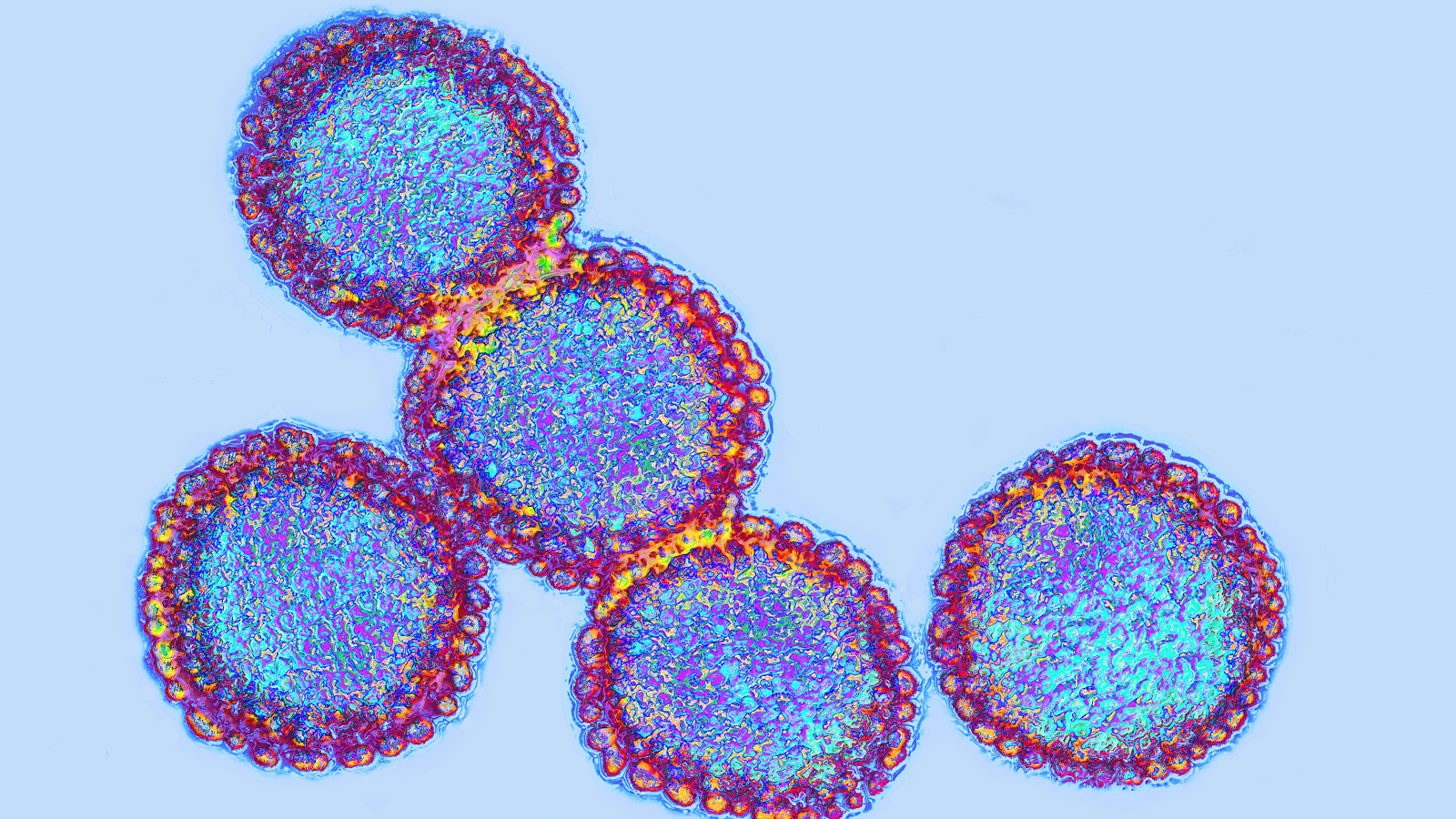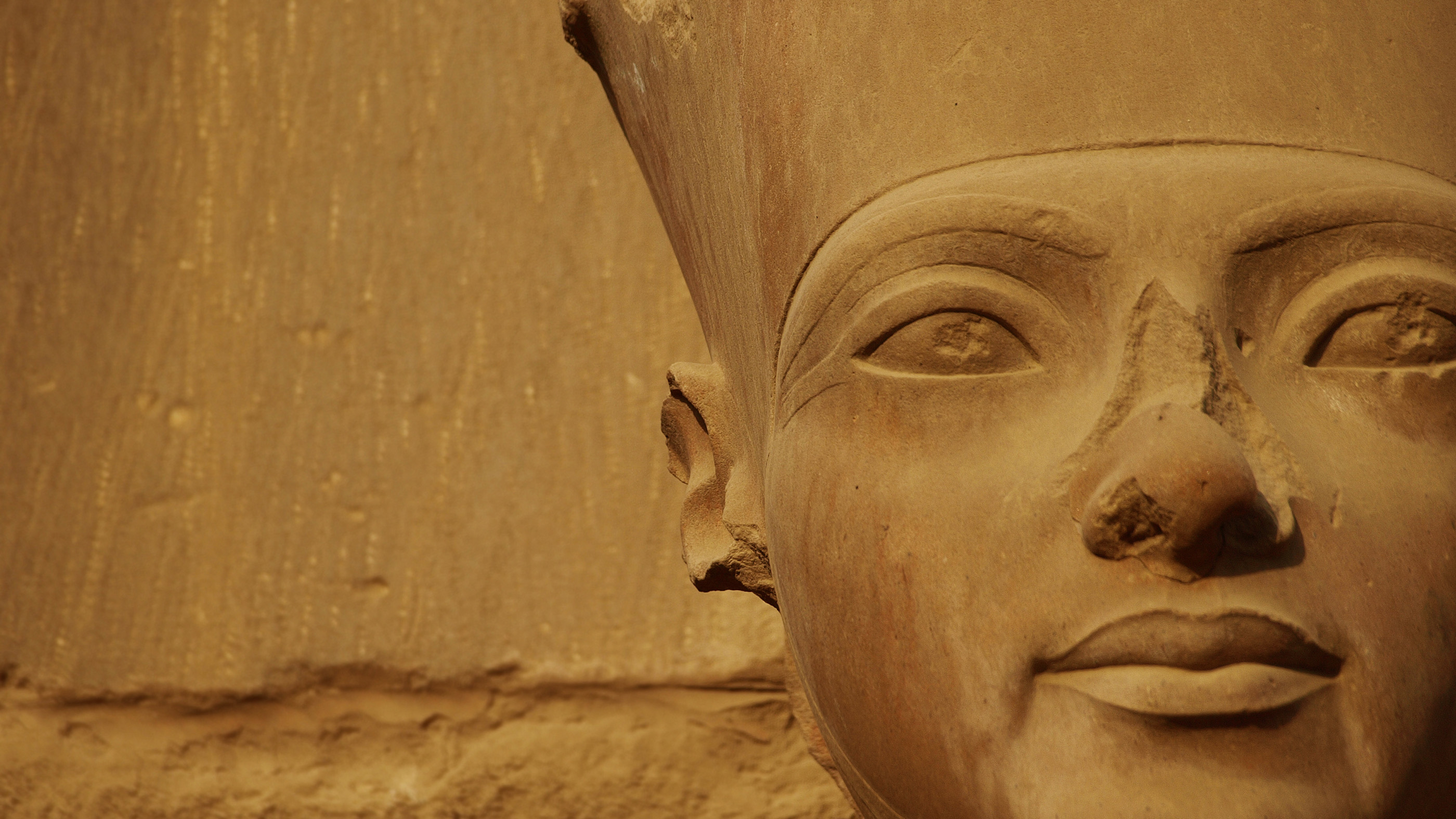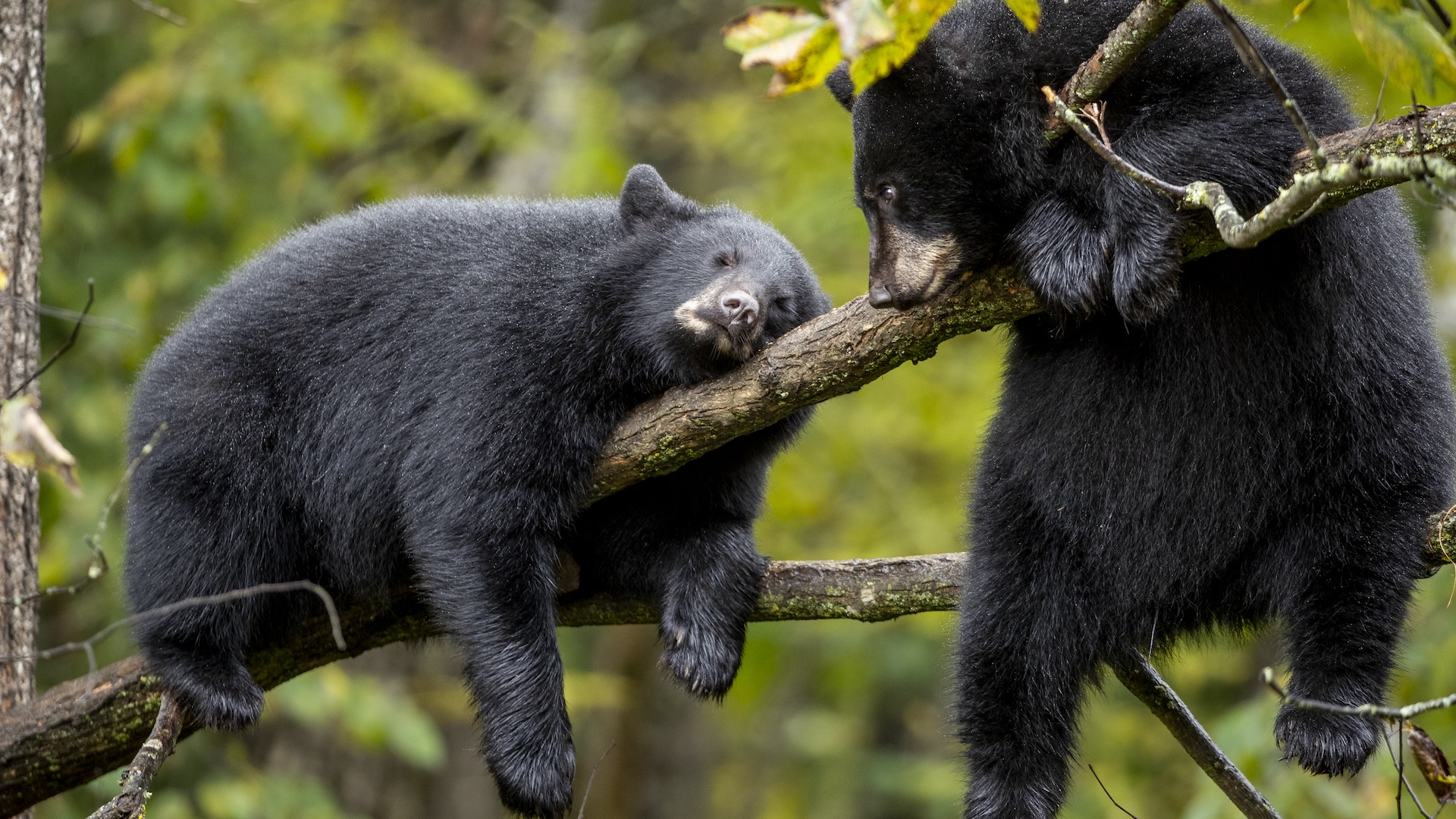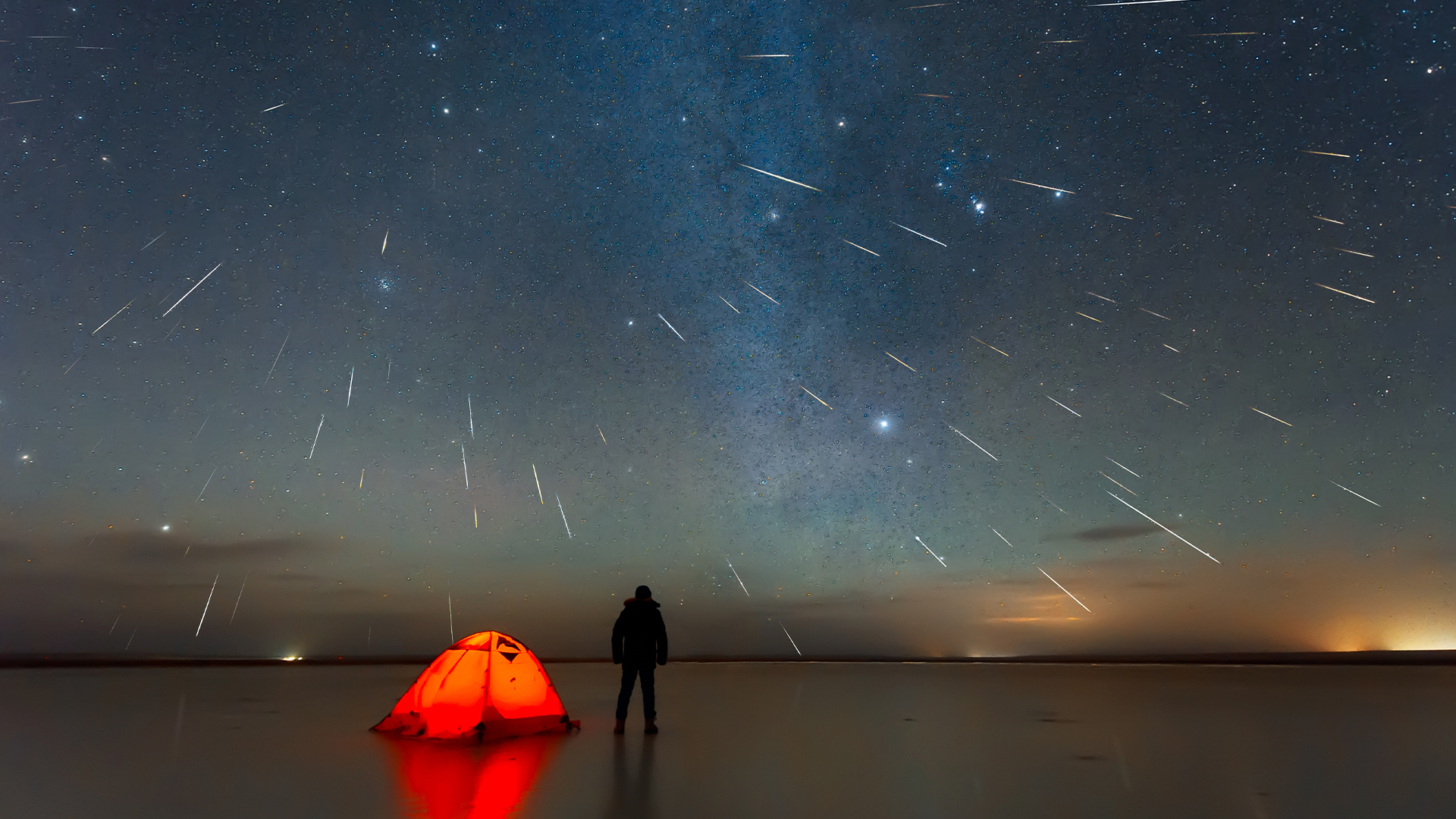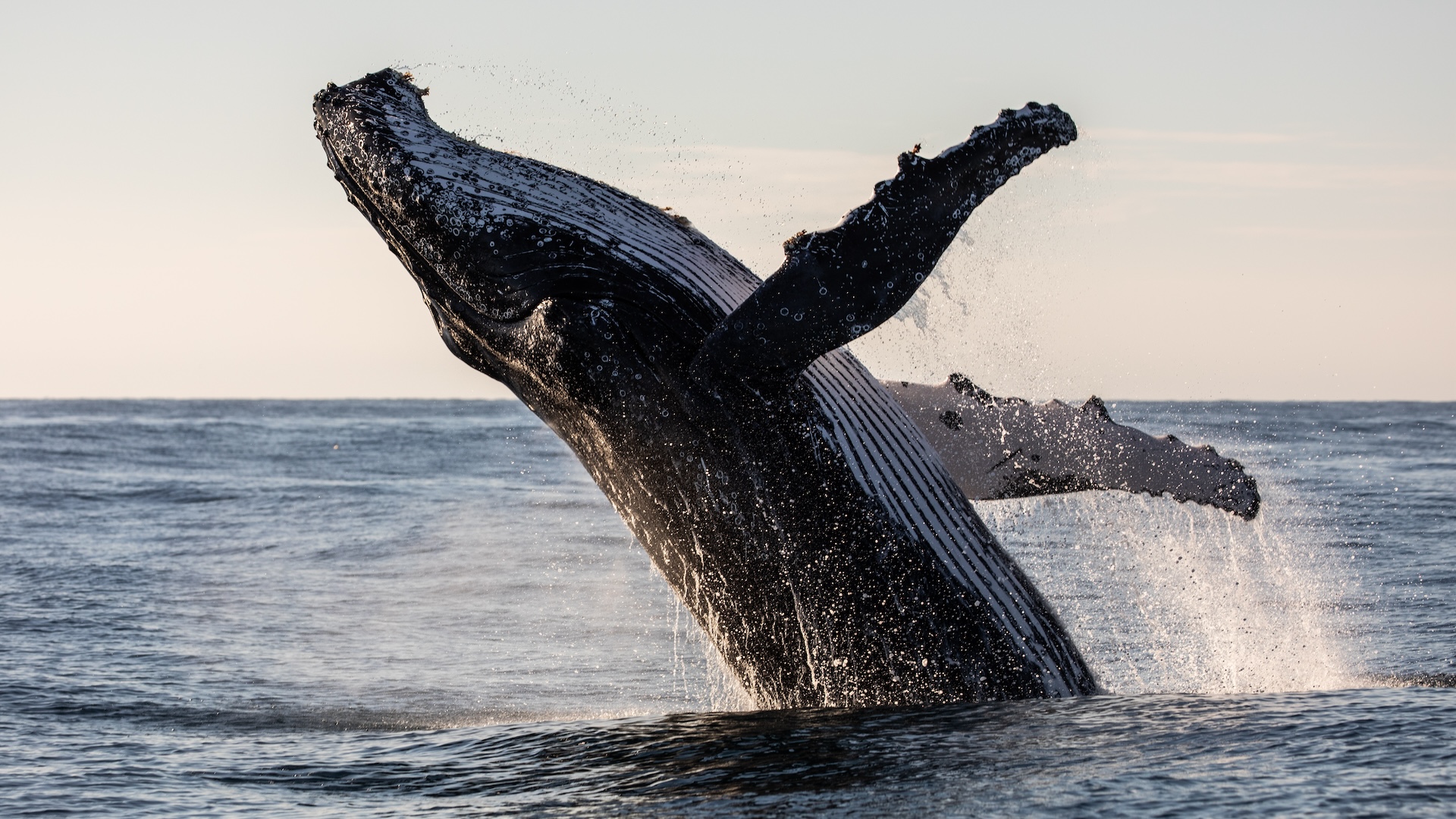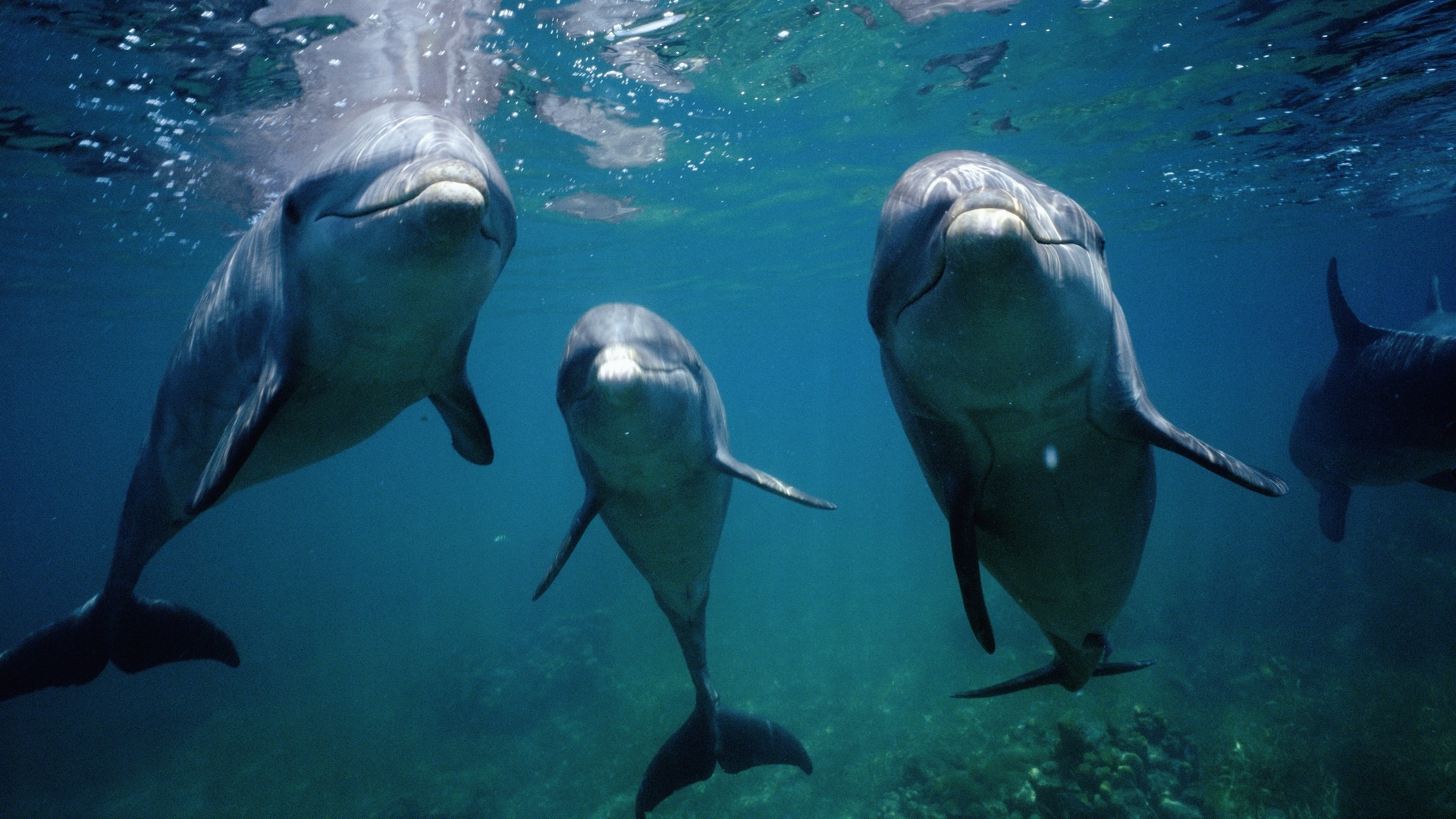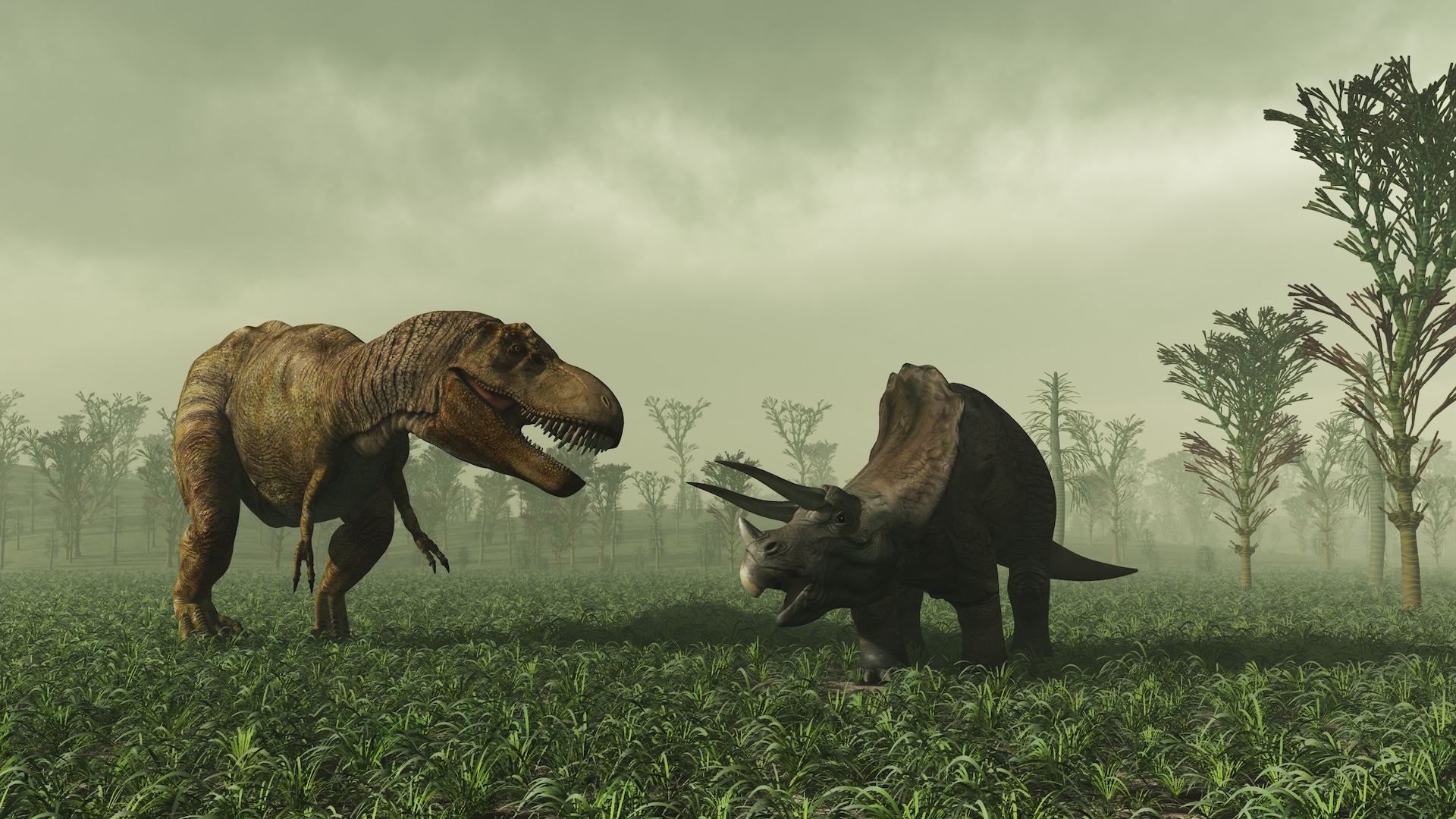Grizzly bears: North America's brown bear
The term "grizzly bear" can mean different things to different people.
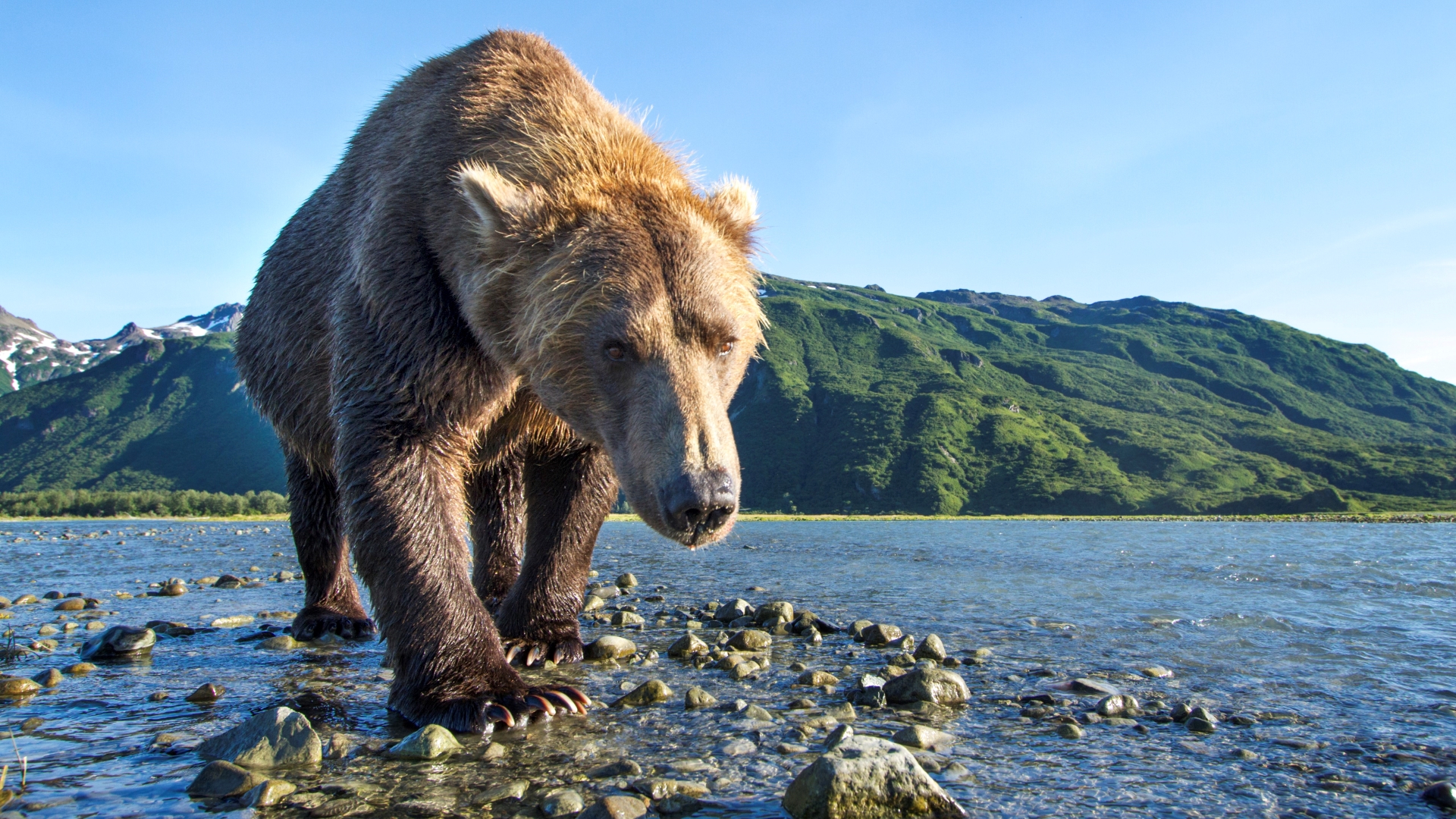
Grizzly bears are a type of brown bear that live in North America. The name "grizzly bear" is typically given to members of the subspecies Ursus arctos horribilis, but the scientific classification of American brown bears is not settled, and some people use "grizzly bear" and "brown bear" interchangeably.
Grizzly bears are named after their grizzled hair, which can be streaked with strands of gray or silver. However, people commonly believe the word "grizzly" comes from "grisly," which means to cause horror, according to the Center for Biological Diversity. Despite their imposing size and appearance, grizzly bears rarely attack humans.
Are grizzly bears and brown bears the same?
Brown bears (Ursus arctos) are the most widely distributed bears in the world and can be found in North America, Europe and northern Asia, according to the International Union for Conservation of Nature (IUCN). North America's brown bears are split into two main groups; grizzly bears and Kodiak bears (Ursus arctos middendorffi). While Kodiak bears are only found on the Kodiak Archipelago in Alaska, grizzly bears live across the rest of their North American range, according to the National Wildlife Federation (NWF). This includes mainland Alaska, three other U.S. states and Canada.
Kingdom: Animalia
Phylum: Chordata
Class: Mammalia
Order: Carnivora
Family: Ursidae
Genus and species: Ursus arctos
Subspecies: horribilis
Source: ITIS
Grizzly bears can be grouped together under the subspecies Ursus arctos horribilis, but some sources recognize multiple subspecies. For example, the Integrated Taxonomic Information System (ITIS) recognizes eight brown bear subspecies in North America, including extinct California grizzly bears (Ursus arctos californicus). These grizzlies inhabited California until humans wiped them out in the 1920s, according to the Pacific Grove Museum of Natural History in California.
"Grizzly bear" is a common (rather than a scientific) name, so it doesn’t necessarily correspond to a specific subspecies. According to the NWF, many North Americans use "grizzly bear" to describe smaller and lighter-colored bears that live in interior areas, and "brown bear" for larger and darker bears in coastal areas. Regardless of how the name is used, all grizzly bears are members of the only brown bear species.
Related: Mountain goat kills grizzly bear by stabbing it with razor-sharp horns
What do grizzly bears look like?
Grizzly bears are typically 3 to 5 feet (0.9 to 1.5 meters) tall at the shoulder when standing on all fours and can reach almost 9 feet (2.7 m) tall when standing on their hind legs. Males are heavier than females and weigh up to 860 pounds (390 kilograms), while females weigh up to 455 pounds (205 kg). Grizzlies are smaller than Kodiak bears and polar bears, which can both stand more than 10 feet (3 m) tall.
Grizzly bears’ coat color can be anything from blond to black, according to the National Park Service. This wide variation in size and coat color means that these two features alone aren't surefire ways to tell grizzly bears apart from American black bears (Ursus americanus), which are typically smaller and darker — but not always.
A more reliable method to distinguish grizzly bears from black bears is to look at a bear's body shape and tracks. All brown bears, including grizzly bears, have a pronounced shoulder hump that is higher than their rump. Black bears lack a hump, and their rumps are higher than their shoulders. Furthermore, grizzly bears have dish-shaped faces and short, round ears, while black bears have straight faces and taller, more oval-shaped ears, according to the NPS. Brown bears also have longer and straighter claws that leave marks in tracks more often than black bear claws do.
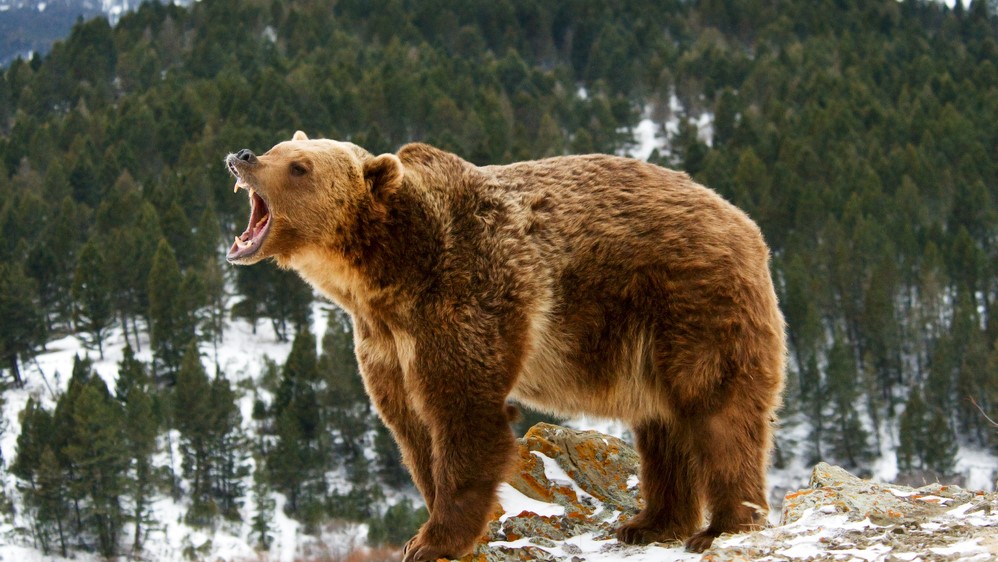
Are grizzly bears dangerous?
Grizzly bears typically avoid people unless they perceive them as a threat to their cubs, food or territory. However, bears do sometimes attack and kill humans. Brown bears have killed 84 people in the U.S. and Canada since 1900, according to the Florida Museum of Natural History. The same records show that black bears have killed 78 people and polar bears have killed 11 people during the same period.
The NPS recommends that people keep their distance from bears, make an effort to be noticeable when in a bear's environment and avoid surprising them. Bear behavior can be unpredictable, and there isn't a strategy to deal with bear attacks that will work in every situation.
According to the NPS, if attacked by a grizzly or brown bear, you should leave your backpack on (if you have one) and play dead by lying flat on your stomach with your hands clasped on the back of your neck and legs spread — this makes it harder for the bear to turn you over. Grizzlies usually attack with greater intensity if you fight back, so it's best to stay still until the bear leaves you alone. However, you should fight back vigorously if the attack persists by striking the bear in the face with anything available to you, according to the NPS. The NPS advice differs for black bear attacks: During a black bear attack, it is never advisable to play dead. Victims of black bear attacks should try to escape or fight back if no escape is possible.
People who are in a tent when attacked by any bear, or stalked and then attacked, should not play dead and should instead immediately fight back. In this scenario, the bear sees humans as prey, the NPS says.
Related: Woman killed in unusual grizzly bear attack
Where do grizzly bears live?
The vast majority of North American brown bears, which includes most grizzly bears, live in Alaska. The state is home to an estimated 30,000 brown bears, or about 95% of the total population, according to the Pacific Grove Museum of Natural History. Grizzly bears also live in Canada and the U.S. states of Washington, Idaho, Montana and Wyoming, according to the International Association for Bear Research and Management.
Grizzly bears are adaptable and occupy different habitats across their range, including coastal areas, mixed-conifer forests, grasslands, mountainous forests and Arctic tundra, according to the Center for Biological Diversity. Individual bears live within home ranges that cover 50 to 150 square miles (130 to 390 square kilometers) for females and up to 600 square miles (1,555 square km) for males, and their ranges can overlap with other bears’ territories, according to the University of Montana's Grizzly Bear Recovery Program.
Grizzlies are solitary but do sometimes interact with other bears. When grizzly bears rub trees with their backs, they're not trying to scratch an unbearable itch. Rather, they are communicating with one another by leaving their scent. They also use urine to mark their territory, and they communicate with other bears using sounds and movement, according to the Pacific Grove Museum of Natural History.
Grizzlies can be diurnal (active during the day) or nocturnal (active during the night), and they may switch their activity patterns if disturbed by humans. A 2013 study of bears in Yellowstone National Park, published in the Journal of Mammalogy, found that grizzly bears' peak period of activity varied from midday to evening depending on the season, suggesting that they also change their activity patterns based on food availability.
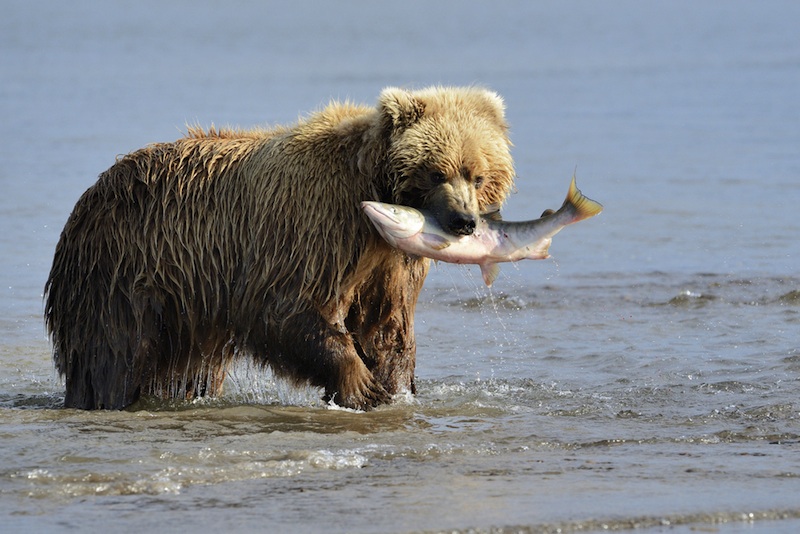
What do grizzly bears eat?
Grizzlies are omnivores, which means they eat a mixed diet of vegetation and meat. A grizzly bear's diet can consist of fruit, nuts, leaves, roots or animals, which can be as small as insects or as large as ungulates, such as moose.
The 2013 study of Yellowstone bears found that 70% of the bears’ elk calf kills took place at dusk or night, when the calves were likely easier to catch; the bears were therefore nocturnal during the calving season in late spring and early summer and became diurnal during the summer and early fall, when their diet shifted to roots, berries and nuts. A 2006 study into grizzly bear diet published in the Canadian Journal of Zoology found that grizzly bears eat more meat in areas where ungulates and spawning salmon are more abundant.
Grizzly bears eat as much food as they can in the summer and fall to build up fat reserves before they enter dens and hibernate over winter. Grizzlies are excellent diggers and use their front claws to dig dens into hillsides, or they make their dens in rock caves, tree hollows or brush piles, according to San Diego Zoo. During hibernation, a grizzly's heart rate slows from 70 beats per minute to only 10 beats per minute; metabolic activity also decreases, and the bear stops defecating. Hibernation time varies with the length of winter across the grizzlies' range, but they can stay in their dens for up to seven months living off their fat reserves. Captive grizzly bears that have access to food all year round, such as the bears in San Diego Zoo, may not hibernate at all.
How do grizzly bears reproduce?
Grizzly bear mating season takes place from May to July, according to the University of Michigan's Animal Diversity Web (ADW). During that time, fertilized eggs start to develop in females, but implantation in the uterus is usually delayed until November when the female is hibernating. After a gestation period of six to eight weeks, a mother gives birth to between one and four grizzly bear cubs. Newborn cubs weigh between 12 and 24 ounces (340 and 680 grams) and are cared for by their mother in the den.
Mothers stay with their cubs for at least two years before separating. Most grizzly bears live for up to 25 years in the wild, according to the NWF. However, some bears may live beyond 30 years. In 2020, a 34-year-old male grizzly bear monitored by scientists was caught in the Yellowstone region — although it was subsequently euthanized as it was in extremely poor physical condition and had begun attacking cattle, the Jackson Hole News & Guide, a newspaper in Wyoming, reported.
Related: During Fat Bear Week, bears compete in a battle of the bulge
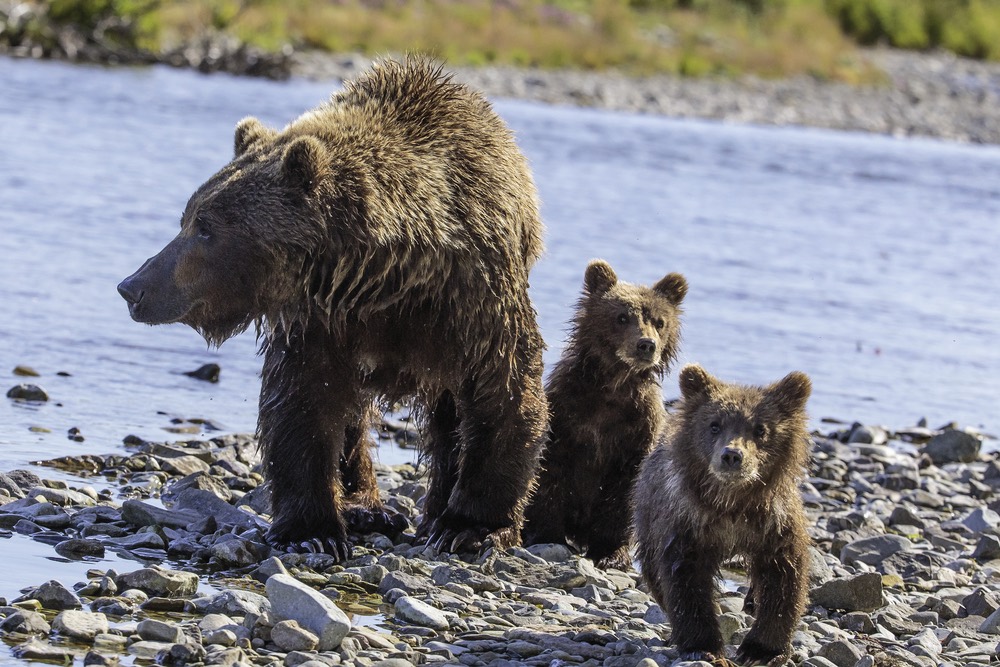
Are grizzly bears endangered?
The IUCN doesn’t consider brown bears to be an endangered species, and they are listed as Least Concern. However, this assessment covers all brown bears around the world and not grizzly bears in North America specifically.
There were an estimated 50,000 grizzly bears spread across what is now the western U.S. until they were annihilated en masse in the 1800s by settlers, who tried to eradicate the bears. Thousands of grizzlies were shot, poisoned and trapped, and by the 1930s they were restricted to about 2% of their former range, according to the U.S. Fish & Wildlife Service.
Grizzly bears became protected as a threatened species in the Lower 48 states in 1975, and it is illegal to kill them unless a person is defending themselves or another person. Grizzly bear hunting is legal but regulated in Alaska, where licensed hunters are permitted to kill bears with certain restrictions, such as not being allowed to target bears with cubs, according to the Alaska Department of Fish and Game. Today, it is estimated there are between 20,000 and 26,000 grizzly bears in Canada. There are about 30,000 grizzly bears in Alaska and an estimated 1,900 in the lower 48 states.
Additional resources
To learn more about where the "grizzly bear" name came from, read parts 1 and 2 of "A Bear by Any Other Name: The Many Monikers of Ursus arctos" on the Alaska Department of Fish and Game website. For more information about bear attacks, check out "Bear Attacks: Their Causes and Avoidance" (Lyons Press, 2018), available to buy at Amazon. To see grizzly bears catching salmon, watch this short YouTube video by BBC Earth.
Bibliography
Alaska Department of Fish and Game, "Black Bear Hunting in Alaska," 2021. https://www.adfg.alaska.gov/index.cfm%3Fadfg%3Dblackbearhunting.blackbrown
Dewey, T, and Ballenger, L. Animal Diversity Web, "Ursus arctos," 2002. https://animaldiversity.org/accounts/Ursus_arctos/
Center for Biological Diversity, "Grizzly bear." https://www.biologicaldiversity.org/species/mammals/grizzly_bear/natural_history.html
Fortin et al. "Temporal niche switching by grizzly bears but not American black bears in Yellowstone National Park," Journal of Mammalogy, Volume 94, Aug. 16, 2013. https://academic.oup.com/jmammal/article/94/4/833/895215
Florida Museum of Natural History, "International Shark Attack File: Bear Attacks," updated Feb. 11, 2021. https://www.floridamuseum.ufl.edu/shark-attacks/odds/compare-risk/bears/
Grizzly Bear Recovery Program, University of Montana, "Grizzly bear biology." https://www.cfc.umt.edu/grizzlybearrecovery/grizzly-bears/biology.php
Integrated Taxonomic Information System, "Ursus arctos Linnaeus, 1758," reviewed 1993. https://www.itis.gov/servlet/SingleRpt/SingleRpt?search_topic=TSN&search_value=180543
International Association for Bear Research and Management, "Brown bear." https://www.bearbiology.org/bear-species/brown-bear/
McLellan et al. "Ursus arctos," The IUCN Red List of Threatened Species, 2017. https://www.iucnredlist.org/species/41688/121229971
Koshmrl, M., Jackson Hole News & Guide, "Grizzly 168 brushes up against longevity records for North American bears," Jan 20, 2021. https://www.jhnewsandguide.com/news/environmental/grizzly-168-brushes-up-against-longevity-records-for-north-american-bears/article_d1786f9b-cd62-5ef4-ad53-7d0b3efdee5b.html
Mowat, G., and Heard, D. C. "Major components of grizzly bear diet across North America," Canadian Journal of Zoology, Volume 84, March 28, 2006. https://www.researchgate.net/publication/237973703_Major_components_of_grizzly_bear_diet_across_North_America
National Park Service, "Bear Identification," updated Oct. 26, 2021. https://www.nps.gov/articles/bear-identification.htm
National Park Service, "Grizzly Bear," updated Nov. 1, 2021. https://www.nps.gov/yell/learn/nature/grizzlybear.htm
National Park Service, "Staying Safe Around Bears," updated April 13, 2018. https://www.nps.gov/subjects/bears/safety.htm
National Wildlife Federation, "Grizzly Bear." https://www.nwf.org/Educational-Resources/Wildlife-Guide/Mammals/Grizzly-Bear
Pacific Grove Museum of Natural History, "Brown Bears." https://www.pgmuseum.org/brownbear
San Diego Zoo, "Brown Bear," 2022. https://animals.sandiegozoo.org/animals/brown-bear
U.S. Fish & Wildlife Service, "Ursus arctos horribilis," 2021. https://www.fws.gov/species/brown-bear-ursus-arctos-horribilis
This article was originally written by Live Science contributor Alina Bradford and has since been updated.
Editor's note: The numbers of grizzly bears in the U.S. and Canada was corrected at 3.26 a.m. on May 21, 2024.
Sign up for the Live Science daily newsletter now
Get the world’s most fascinating discoveries delivered straight to your inbox.

Patrick Pester is the trending news writer at Live Science. His work has appeared on other science websites, such as BBC Science Focus and Scientific American. Patrick retrained as a journalist after spending his early career working in zoos and wildlife conservation. He was awarded the Master's Excellence Scholarship to study at Cardiff University where he completed a master's degree in international journalism. He also has a second master's degree in biodiversity, evolution and conservation in action from Middlesex University London. When he isn't writing news, Patrick investigates the sale of human remains.
